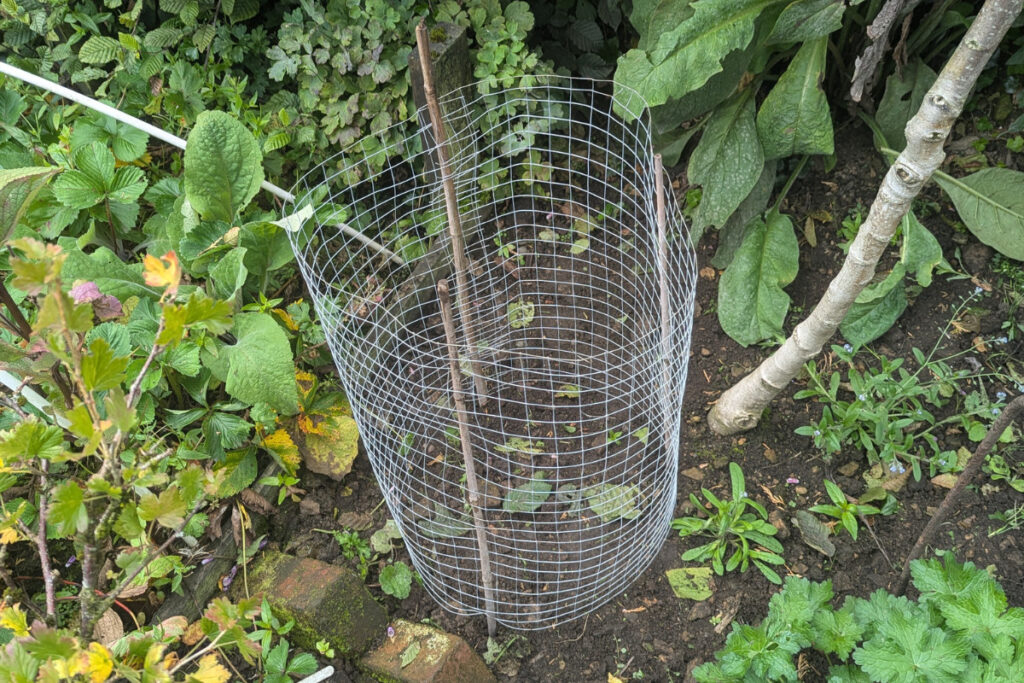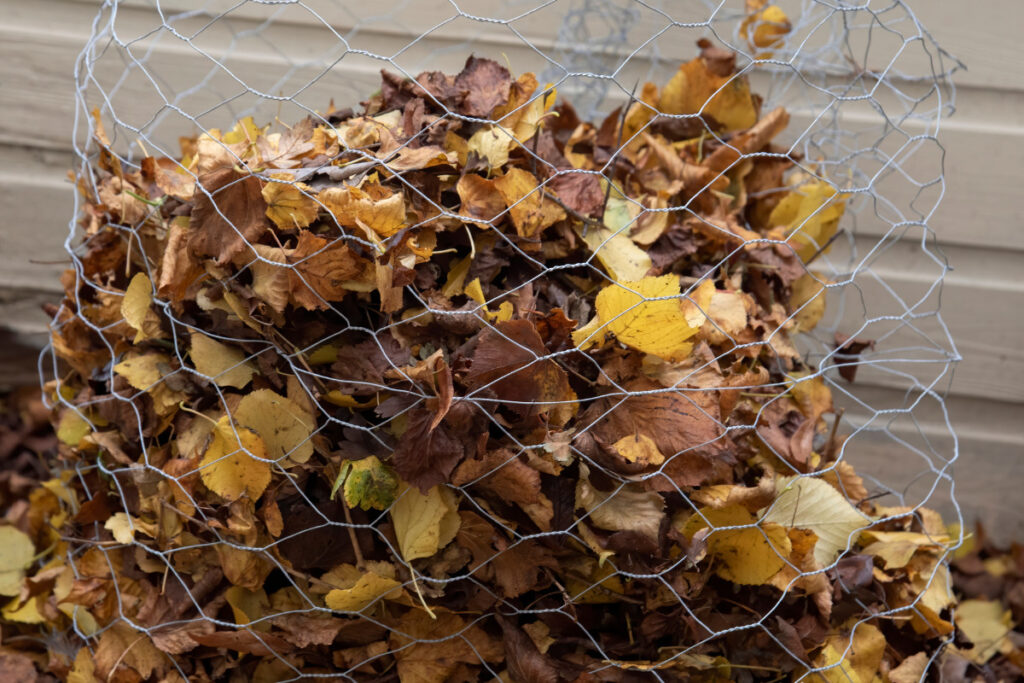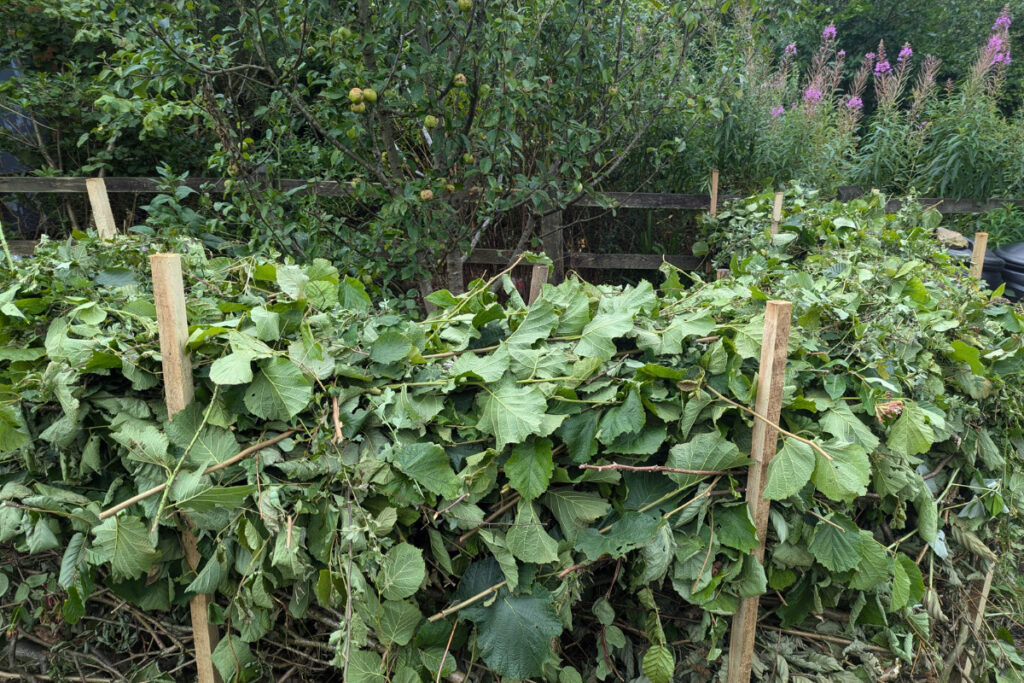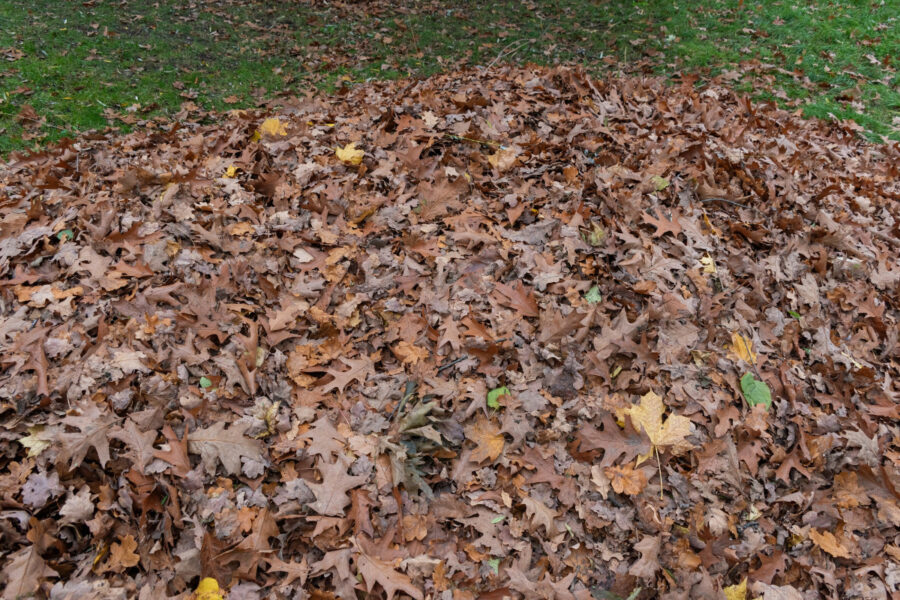AG columnist Andrew Oldham explains how to treasure the fallen leaves and let them feed your garden
As leaves fall and gather on the ground, I dance with joy that such riches are raining down on us at this time of year, for leaves are truly the golden harvest of autumn. This often-overlooked bounty is more important than ever as gardeners move to being peat free. There is a re-awakening among the gardening community about a secret that many of our ancestors knew – autumn is not the end of this harvest, but the promise of the beginning of the next.
Those faded greens, yellows, and browns that flutter down to meet us have the potential to become leaf mould in our gardens, and if you have ever walked through a forest in spring, you understand the powerful potential that leaves have to make the undergrowth explode with life. Leaf mould should be part of our gardening toolkit that helps connect and build our resilience in a hectic world. The results are slow but the reward is enriching for your soil and more besides, and it stands to make that bag of seed compost you bought look possibly a little inferior.
So I implore you to set out on a dry autumn morning with a stiff yard brush, a pair of thick gardening gloves and wheelbarrow and scoop up those leaves. This magical harvest is lightweight and easy to bag up, tie up, and transport to the next part of the process. I once had a Fiat Panda and I crammed in 20 bags of dry leaves, driving home with my face squashed between windshield, the smell of autumn driving me forth.
Leaf mould can take two years
Leaves rot down slowly and need the presence of fungi to start decaying. They contain a high amount of lignin, which is a major part of what makes wood and they can take over two years to turn into leaf mould. This is possibly why for some gardeners, the art of making it has been abandoned in favour of commercially-bought composts. Yet it is well worth waiting for. It’s a valuable soil improver, makes a good seed compost, and is entirely cost-free. Now, with the impending ban on peat composts and the rise in costs, there is a logical reason to return to making as much growing media as we can in our gardens. Abandoning leaves to be a slip hazard on the road, which eventually choke drains, seems a waste of such a valuable resource.
Leaves contain up to 80% of the nutrients that trees pick up; this is why forests are such an abundant source of food for people and animals. Making leaf mould releases these nutrients back into the world, and what is left is a fine compost that in year one can be used to mulch borders, retain moisture in the soil and enrich beds. By year two, those leaves will be a fine crumbly mix that can be sieved, bagged up and used as a seed compost for free.
Different ways to make your own


There are several ways to make your own leaf mould. The simplest method is to store fallen leaves in thick bin bags (making a few holes in the bottom with a garden fork), add the contents of a full watering can, tie up the top and toss them behind the shed and forget about them for two years.
As you go about the next 24 months in your garden, the damp conditions within the bin bags will encourage fungi which in turn bring about the rotting process. However, I am not a fan of this method as it wastes plastic as the bags cannot be reused, and it also adds micro-plastics into the mix, and finally, I always forget about them.
Therefore, I opt for a more traditional way of getting my leaves to rot and build several leaf mould cages around the garden. These are often situated where I need them, on top of beds with poor soil or within distance of the potting shed. I build my cages from recycled chicken wire, and then I use three old bamboo canes to make legs for the cage. I weave the canes through the wire and drive them into the ground to stop the cage collapsing or getting blown away in winter storms.
How to make a leaf mould cage
Cages can be made from anything, and I have seen them built from old pallets and old fish nets. I always situate my structures on the soil, but as this process is fungi driven, such cages can be placed on patios, balconies, or drives, or you can opt for the bin bags if space is short. The open cage method allows the weather into the growing heap, which over autumn swells as I add more leaves, and build more cages. I keep these around 60cmx1m (2x3ft) meaning that flowers in bloom disguise them in the summer months.
However, you can build your leaf mould cage as big as you wish, and I have in the past used old compost heaps and ton bags from builders’ merchants.


Recently though, I have been experimenting with the idea of using leaf mould as part of my dead hedging process that uses up the prunings from around the garden. I have built dead hedges that contain leaf mould bins, so that the hedge forms the walls of the cage. This means I can create large leaf mould bins that encourage biodiversity within that area of the garden. I have made these sinuous, snaking forms that wend their way up the garden and through the orchard where they can enrich the soil as the leaves break down.
No matter which method you employ, within two years you will end up with something rich, sweet-smelling, dark and incredibly useful as a soil improver, and if you wish, home-made seed compost. Collecting leaves in this way forms a most welcome part of the year, a forgotten, important harvest that connects you with the changing seasons, gardening methods from the past for the future, for a thrifty, thriving and more resilient soil overall.

BIO
Andrew Oldham is a self-sufficient(ish) gardener who believes in the joy of down-to-earth growing and cooking. He lives high on the Saddleworth hills with his family at Pig Row. Find him on all social media platforms as @lifeonpigrow
Find more tips, advice and articles like this at the Amateur Gardening website. Subscribe to Amateur Gardening magazine now





